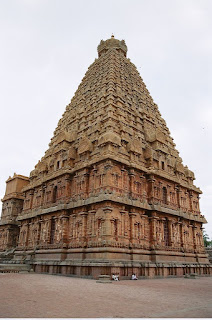Tamil people, a Dravidian people from the Indian subcontinent, have a recorded history going back more than two millennia. The oldest Tamil communities live in southern India and north-eastern Sri Lanka. A number of Tamil emigrant communities resided scattered around the world, especially in central Sri Lanka, Malaysia, South Africa, Singapore, and Mauritius with more recent emigrants found in New Zealand,Australia, Canada, the United States, and Europe. An estimated 77 million Tamils live scattered around the world.
The art and architecture of the Tamil people encompass some of the greatest contributions of India to the art world. The music, the temple architecture and the stylized sculptures favored by the Tamil people remain live art forms, still learned and practiced. The classical language of Tamil, one of the oldest languages in India, has the oldest extant literature among other Dravidian languages.
Unlike many ethnic groups, Tamils experienced governance by more than one political entity during most of their history. Tamilakam, the traditional name for the Tamil lands, experienced political unity for only a brief period, between the ninth and twelfth centuries, under the Chola Dynasty. Ethnologist identity Tamil primarily by linguistic similarities, although in recent times the definition has been broadened to include emigrants of Tamil descent who maintain Tamil cultural traditions, even if they no longer regularly speak the language. Tamils ethnically, linguistically and culturally relate to the other Dravidian peoples of the Indian subcontinent.
The art and architecture of the Tamil people encompass some of the greatest contributions of India to the art world. The music, the temple architecture and the stylized sculptures favored by the Tamil people remain live art forms, still learned and practiced. The classical language of Tamil, one of the oldest languages in India, has the oldest extant literature among other Dravidian languages.
Unlike many ethnic groups, Tamils experienced governance by more than one political entity during most of their history. Tamilakam, the traditional name for the Tamil lands, experienced political unity for only a brief period, between the ninth and twelfth centuries, under the Chola Dynasty. Ethnologist identity Tamil primarily by linguistic similarities, although in recent times the definition has been broadened to include emigrants of Tamil descent who maintain Tamil cultural traditions, even if they no longer regularly speak the language. Tamils ethnically, linguistically and culturally relate to the other Dravidian peoples of the Indian subcontinent.

No comments:
Post a Comment